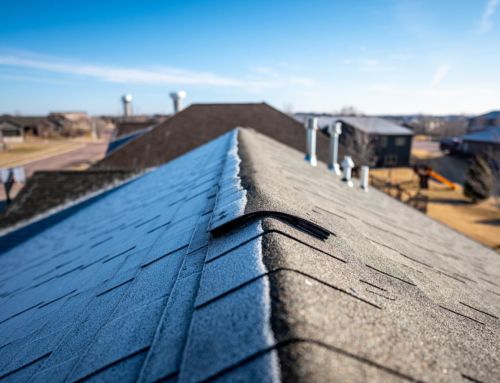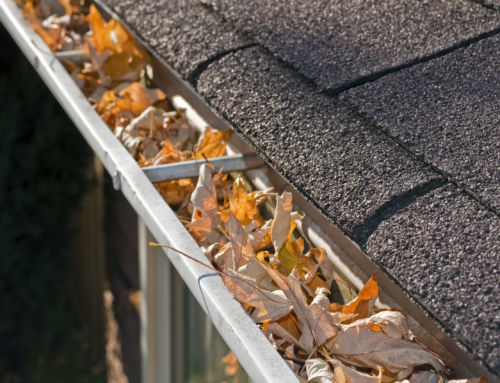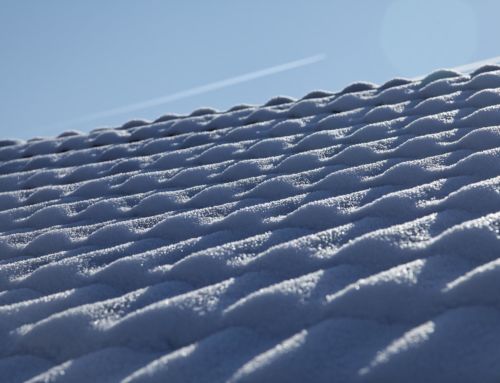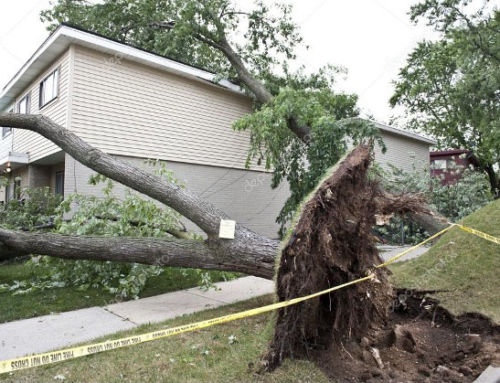Flat roofs are a haven for debris from storms and strong winds. Incorrect roofing installation poses several problems, and don’t forget gradual damage from walking on the surface and other wear and tear. If left unattended, these issues can lead to permanent damages that affect your company’s budget, energy costs, safety, and reputation. Don’t wait until there’s a safety hazard to get a new commercial roof. Spare yourself the costs and audit your roof for these telltale signs.
-
Do You Smell Something?
Does your commercial space smell musty?
If so, you may already have a mold problem. This is likely due to stagnant water collecting on your flat roof. Humidity and trapped moisture also cause algae and mold growth.
Not only is black mold an eyesore for clients and the city, it puts your employees’ health at risk. If left to grow, black mold can cause dizziness, fatigue, chronic respiratory problems, migraines, and skin conditions. This also makes you liable for any work-related ailments caused by roofing mold.
Your roof may be saved with early intervention. Book a maintenance call ASAP to remove mold, check for leaks, and make necessary repairs before any more storms hit. If your roof mold proliferates, get a brand-new commercial roof to avoid future repair costs.
-
You Have Frequent Water Leaks
Commercial roof mold is a surefire sign of a water leak.
Several factors make commercial roofs vulnerable to leaks:
- Heavy storms
- Old roofing materials
- Improper roofing installation
- Weak roofing seams
- Lack of maintenance
Even your HVAC unit and other heavy rooftop equipment can cause roof leaks. When old rooftop equipment is left to rot, it is easier for water to sneak through. For example, your old rooftop ventilation system may not be waterproof, allowing rain to seep through the access panels.
Rooftop puddles are not your only leak concern after storms, either. If your flat roof gutters are stuffed with debris and standing water, that is another recipe for mold. The best way to avoid moldy gutters is to book routine maintenance appointments.
Flat roofs need a good drainage system to keep mold and leaks away. This is another reason to invest in a new commercial roof than spend money on multiple repairs down the road.
-
Your Roof Is Bubbling and Blistering
What happened to your flat roof? Why is the surface covered in bubbles and blisters?
Gradual wear and tear is a leading cause of bubbling. Walking on the roof and weather changes will eventually lift your roofing materials, creating a bubbling effect. Moisture buildup, shoddy installation work, and bad ventilation also cause bubbling or blistering.
Roof bubbles grow in size due to weather. Warm air helps bubbles expand, and cold temperatures help trapped air and standing water compress. This will eventually cause roof bubbles to pop, which leads to more costly repairs.
A roofer can patch up a few blisters, but the more your roof bubbles, the greater the risk of irreparable damage. Mitigate roof bubbling by installing a brand new commercial flat roof.
-
Your Roof Is Cracking
Cracking is a common problem with old flat asphalt roofs and is a clear sign that you need a new commercial roof.
Cracking is typically caused by prolonged exposure to the sun. Over time, UV rays dry out your roof’s membrane, leaving unsightly cracks in the roof’s surface making your roof more susceptible to rooftop accidents and leaks.
Cracks only worsen over time, especially as temperatures fluctuate. Indoor heating and cooling systems also contribute to severe roof cracks.
Cracks are also a sign of age. Flat roofs last roughly 15 years and even longer with routine maintenance. Cracks are your roof’s way of saying it’s time for a replacement.
Flat roofs withstand more force and pressure, making them more vulnerable to cracks than other roof types. Strengthen your flat roof with a single ply or modified bitumen system, so it can better withstand temperature fluctuations, weight, and stress.
-
Skyrocketing Energy Bills
Another sign of roof damage is high energy bills. High energy costs really take a bite out of profits, and your roof is a surprising contributor.
If your energy bills suddenly increase, your HVAC system is working overtime to generate heat. HVAC systems rely on indoor temperatures to accurately assess and distribute heat. Weak roofing makes your HVAC system run longer, increasing your costs.
Robust roofing systems insulate homes and trap heat and cold air indoors, which puts less strain on your heating and cooling systems.
-
Interior Damage to Your Business
Exterior damage hurts your property’s curb appeal and scares away foot traffic, but did you know roof damage also shows on the inside?
Roof leaks can cause unsightly water damage on the interior walls of your lobby, office, conference room, or store. Leaks also leave ceiling spots, cracks, and plaster blistering. By that time, you will need internal repair work, along with a new roof.
If there’s interior water damage, there is likely a mold problem brewing. It is not worth the risk the health and safety of your customers and staff. Book a roofing appointment ASAP to maintain safety and compliance.
New roofing is a critical business investment, but upkeep is just as necessary. Avoid mounting repair costs, and book annual inspections to ensure your roof is in top shape.
Enjoy the ROI on Your New Commercial Roof
Stop paying the costs of your damaged roof. Discover how quickly your new commercial roof delivers on its ROI.
Through the right roofing techniques and proper maintenance, Gen 3 Roofing can prevent expensive damages to your roof.
Schedule your no cost, no obligation roof evaluation today or give Gen 3 Roofing a call for more information at 303-923-5039. Gen 3 Roofing has offices in Colorado and Arizona to serve all of your commercial roofingneeds.






